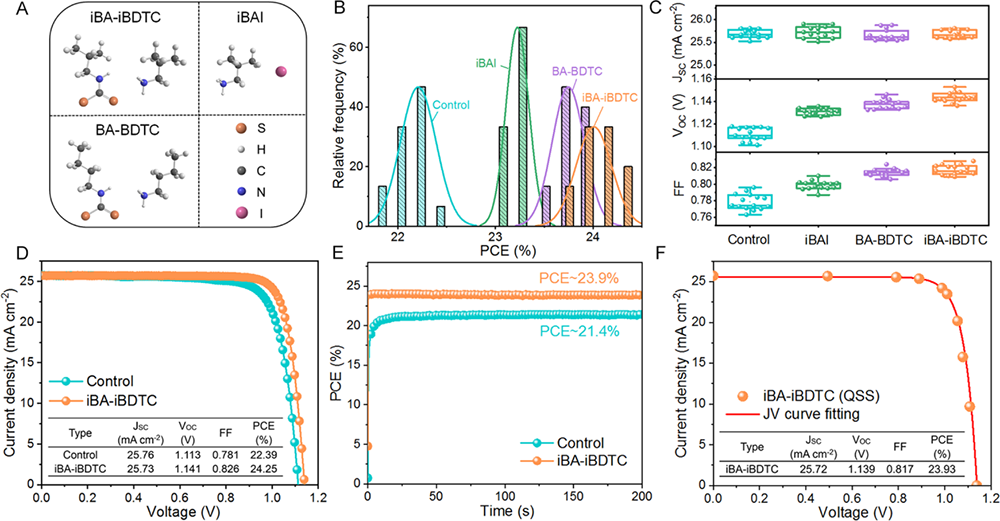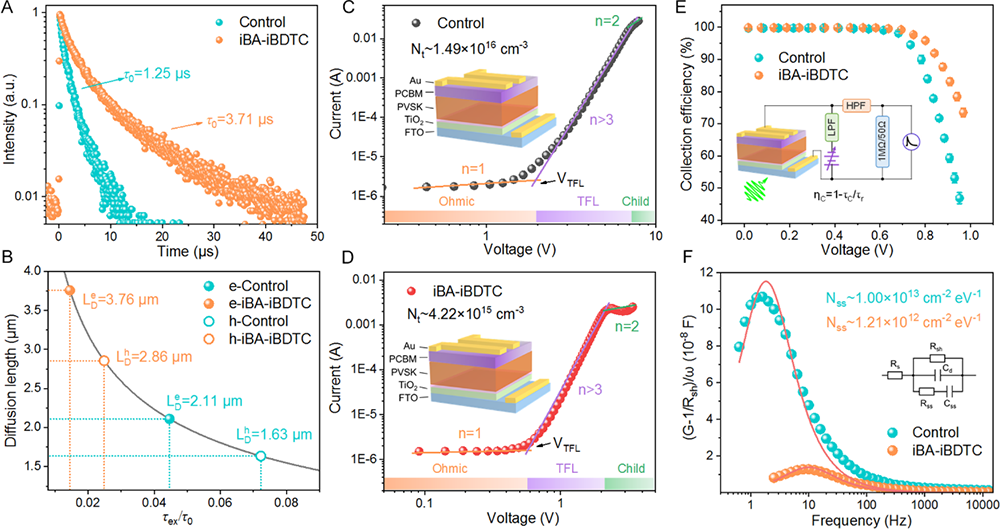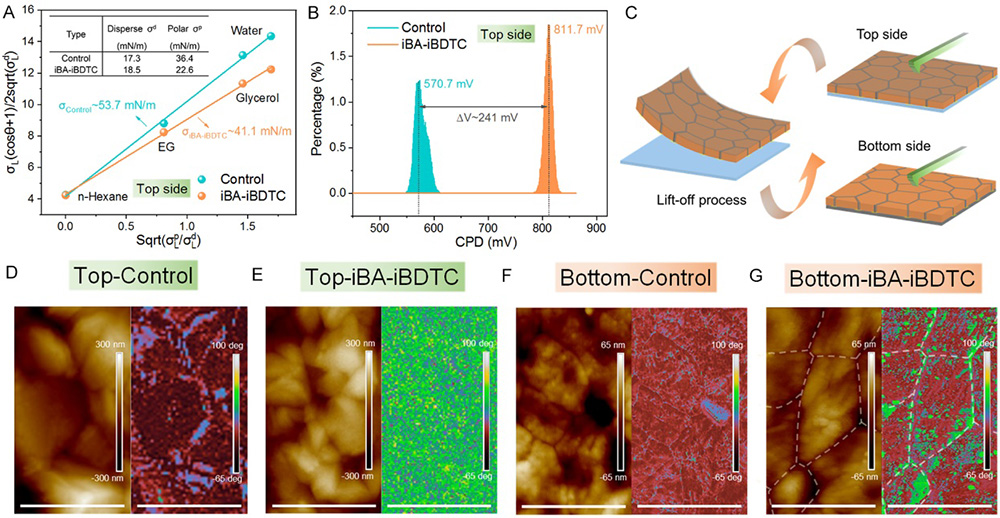Crystallization Regulation Realizes Efficient and Stable Perovskite Minimodules
Date:21-03-2022 Print
Hybrid organic-inorganic perovskite materials have emerged as promising candidates for photovoltaic applications due to their outstanding optoelectronic properties and low-cost solution processing technique. Power conversion efficiency (PCE) of the perovskite solar cell (PSC) has rapidly risen over the last decade, from 3.8% to 25.7%, comparable to Si-based photovoltaic technology. At present, the low stability and the efficiency loss while the cell area is enlarged, are two key issues that need to be overcome in the commercialization of PSCs.
Formamidinium-cesium (FA-Cs) lead halide perovskite has attracted wide interest because of its high thermal and operational stabilities. However, its crystallization suffers from complicated intermediate phase transition processes because the two ion sizes of the FA+ and Cs+ mismatch, leading to smaller dipole moment and weaker interaction with the Pb-I framework. Therefore, it has usually brought about unsatisfied perovskite films with large lattice distortion, element segregation and defect centers.
Coordination-induced crystallization regulation to improve perovskite film quality and introduction of organic long-chain ammonium halides to passivate interface and grain boundary defects have been demonstrated as effective approaches to improve cell performance. Recently, Professor MENG Qingbo's group from Institute of Physics, Chinese Academy of Sciences has developed a dual-functional material to simultaneously realize the above-mentioned two modification effects for highly efficient and stable PSCs.
The researchers report efficient, stable perovskite solar cells and minimodules realized by using an isobutylammonium isobutyldithiocarbamate (iBA-iBDTC) as an additive. On one hand, CSS- group of the iBA-iBDTC will effectively coordinate with the Pb2+ to improve the Pb-I nucleation and FA-Cs perovskite crystal growth. On the other hand, the long-chain iBA+ cation group is distributed on the film surface and grain boundaries to passivate defects, reduce surface energy and stabilize surface structure.
With the synergistic contribution of the cationic and anionic groups, the PCE of the small-area single cell has been improved to 24.25% with excellent operational stability. Over 20.5% PCE has been achieved from a 10.4 cm2 minimodule, which is among the highest results of the perovskite minimodule. This cation-anion synergistic effect of the dual-functional additive provides a more feasible technique route to promoting the PSC development and commercialization.
This study entitled "Efficient, Stable Formamidinium-Cesium Perovskite Solar Cells and Minimodules Enabled by Crystallization Regulation" was published on Joule.
The study was supported by the National Science Foundation of China.

Fig.1 Device efficiency characterization. (Image by Institute of Physics)

Fig.2 Defect characterization of perovskite films and devices. (Image by Institute of Physics)

Fig.3 Interaction between -CSS- anionic group and Pb-I framework. (Image by Institute of Physics)

Fig.4 Spatial distribution of the iBA+ cationic passivation layer in the perovskite film. (Image by Institute of Physics)

Fig.5 Schematic illustration of the material and chemistry mechanism for regulating the crystallization and defect of the perovskite film by using iBA-iBDTC. (Image by Institute of Physics)

Fig.6 Stability and large-area device performance. (Image by Institute of Physics)
Contact:
Institute of Physics
MENG Qingbo
Email:qbmeng@iphy.ac.cn
Key word:
Perovskite solar cell; Minimodule; Dithiocarbamate; Crystallization regulation
Abstract:
Formamidinium-cesium (FA-Cs) lead halide has attracted wide interest for enhancing stability of perovskite solar cells; however, crystallization of FA-Cs perovskite usually suffers from more complicated intermediate phase transition processes. Herein, we have developed a dual-functional additive consisting of organic ammonium cation and dithiocarbamate anion to regulate the crystallization and defects of the FA-Cs perovskite film. With a synergistic contribution of the cationic and anionic groups, 24.25% efficiency has been achieved in a single cell with excellent operational stability. Under steady-state light illumination and bias voltage, 90% power output of its initial state can still be obtained after 500 h continuous operation. After enlarging the device from single cell to module, >20.5% efficiency has been realized from a 10.4 cm2 minimodule by only using an ultralow-cost laser scribing technology. Briefly, this exploitation of cation-anion synergistic effect from dual-functional additives provides more opportunities for promoting the development of perovskite solar cells.


